Galapagos underwater: one year on
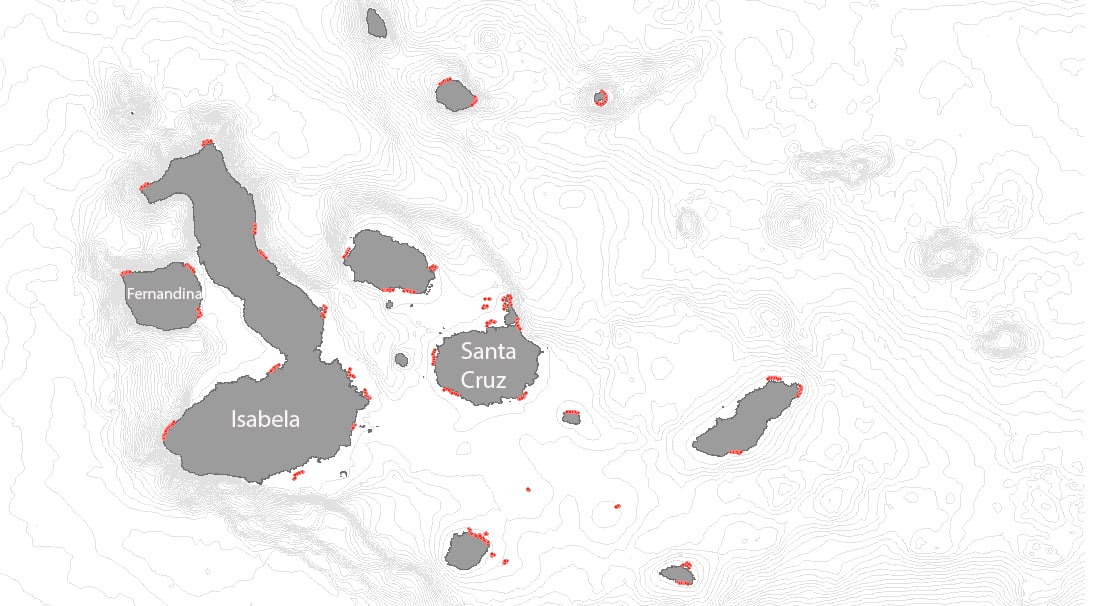
Map of the Galapagos Islands showing the location of the camera deployments (red dots). © Photo Charles Darwin Foundation
After more than three years of planning, applying for funding and doing equipment trials and modifications, and many days of field work and image analysis, we are close to finishing our second survey documenting the abundance and distribution of shark populations in the Galapagos Islands using baited remote underwater stereo-video systems. Between late February and April (the warm season), we sampled 47 sites across the Galapagos Islands. Now that we are in the cool season, we are repeating these surveys to see whether the patterns in the abundance and distribution of sharks differ between warm and cool times of the year. By the time we complete this second survey in the next month, we will have collected more than 750 samples (about 1,250 hours of video imagery).
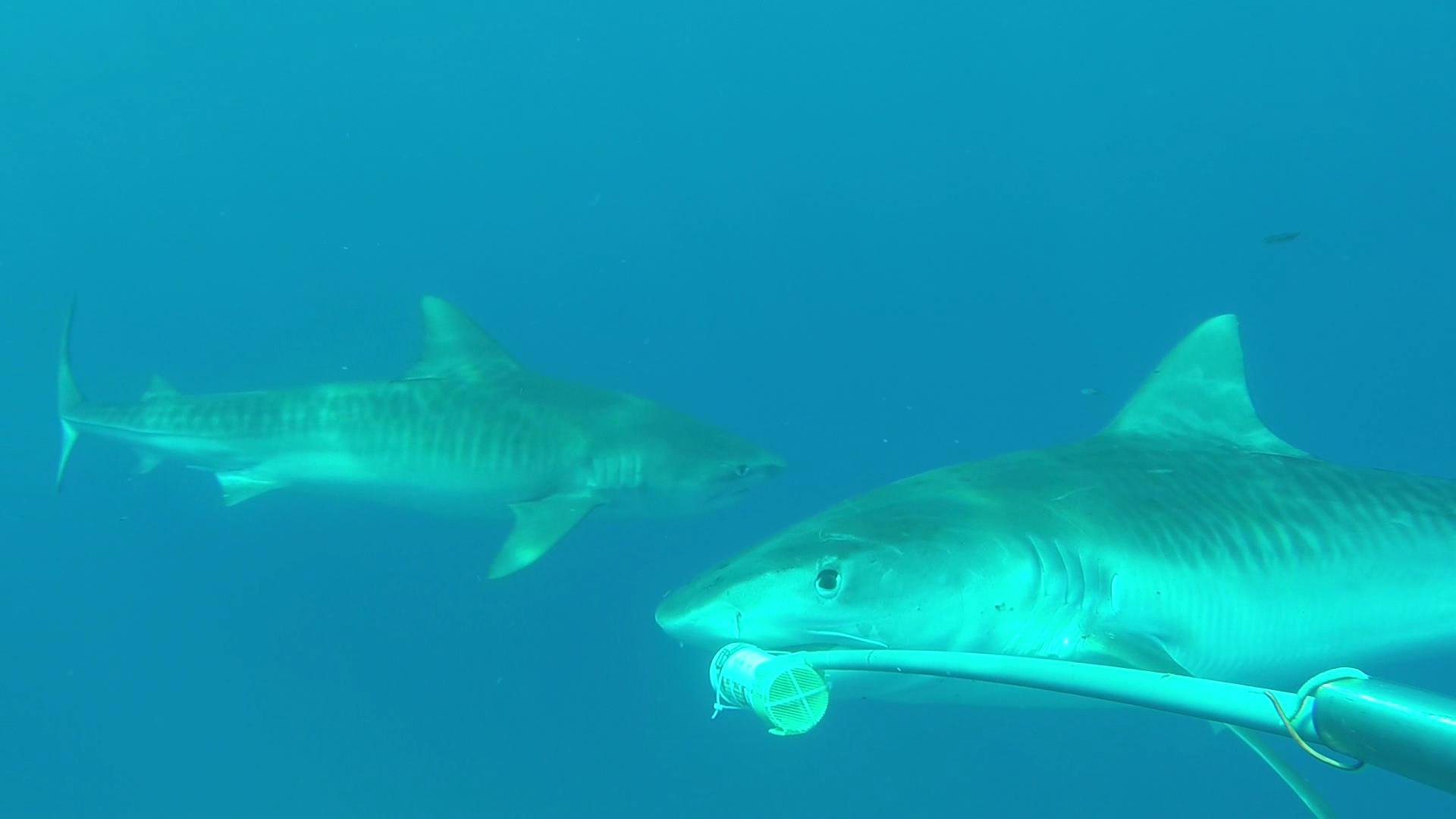
Tiger sharks get a taste of the bait (yellow-fin tuna). © Photo Charles Darwin Foundation

A young tiger shark at Santa Cruz Island. © Photo Charles Darwin Foundation
This project, a collaboration between the Charles Darwin Foundation, Massey University and Curtin University, with the support of the Galapagos National Park directorate, aims to find out how sharks are distributed throughout the Archipelago and where they can be found in the Galapagos Marine Reserve.
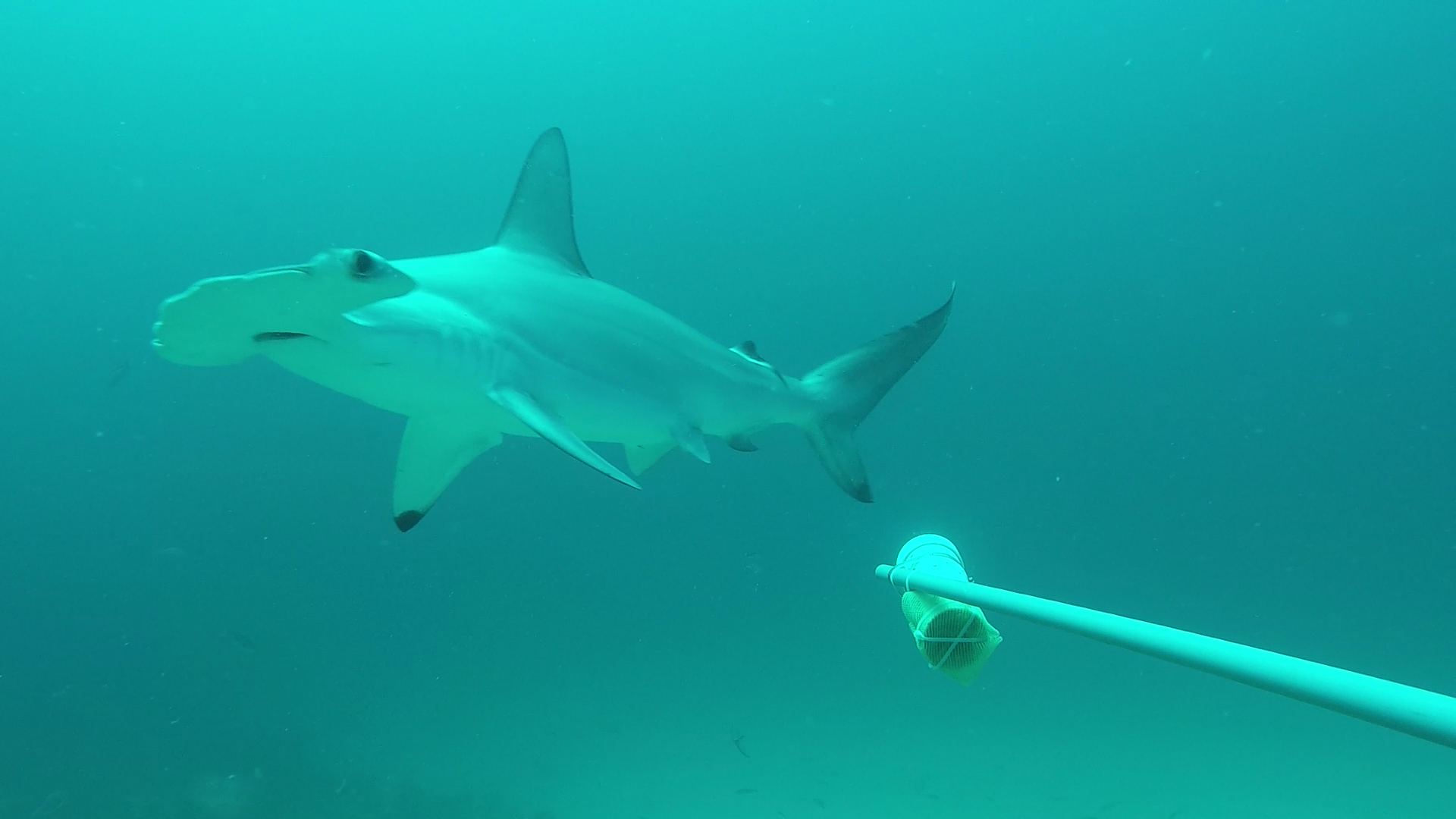
A scalloped hammerhead shark in the northern waters of Isabela Island. © Photo Charles Darwin Foundation
The marine environment of the Galapagos Islands has a very dynamic and localised oceanography, with strong upwelling and a complex seafloor topography driving localised productivity. To start to understand how shark populations are distributed, we are collecting temperature and salinity data from the sites. Once we have finished the video collection, we will survey a representative sample of the human inhabitants of the Galapagos Islands to understand their attitudes towards sharks and interactions with them.
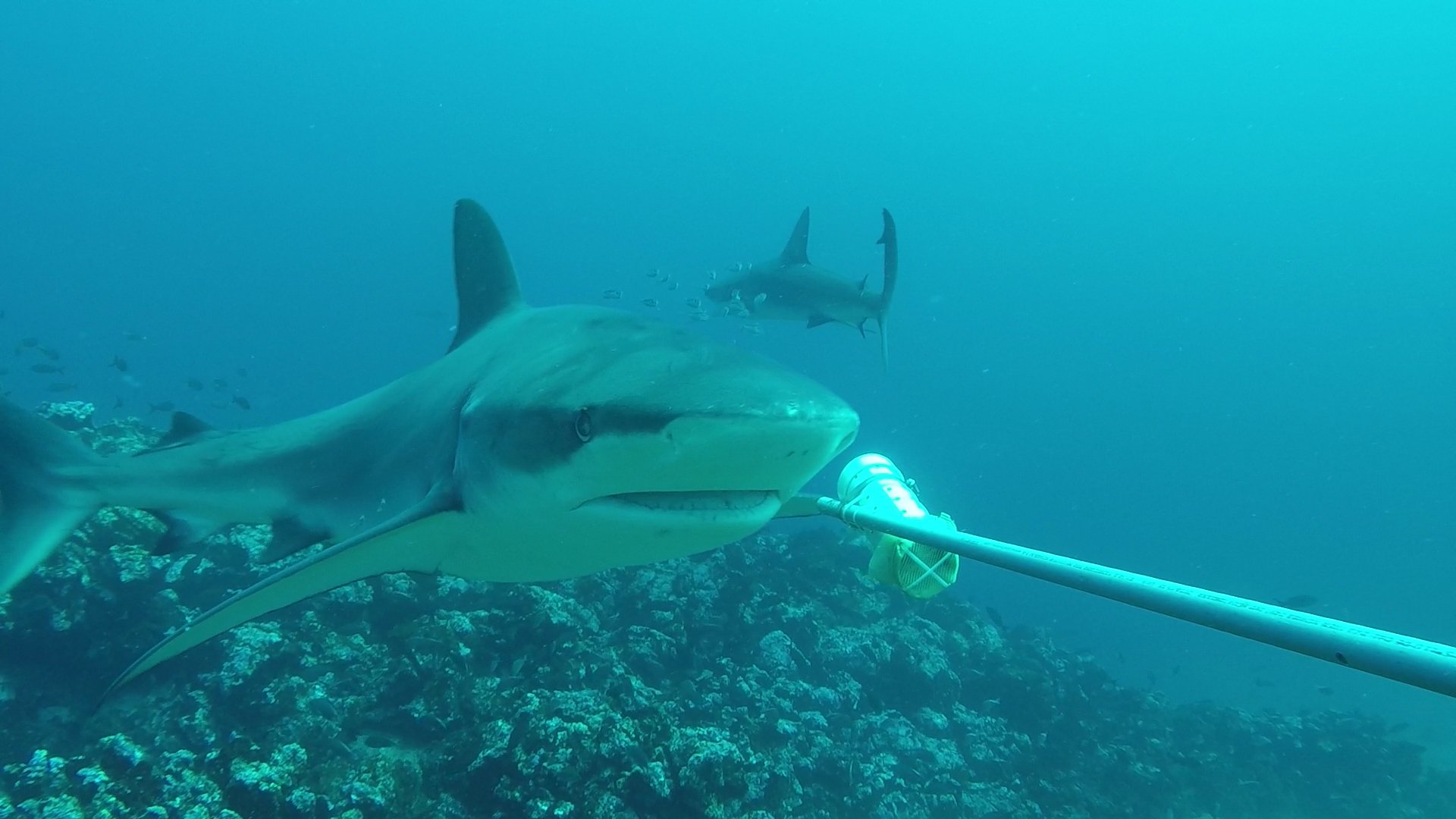
Two large Galapagos sharks at Cabo Douglas, Fernandina Island. © Photo Charles Darwin Foundation
This has been an exceptional year at the Galapagos Islands as El Niño conditions have settled around the islands with unusually warm water for this time of the year. We have learned from previous strong El Niño events (1982–83 and 1997–98) that they may cause a profound impact on the marine communities here, causing a shift in habitats and species assemblages. What will climate change mean for shark populations in the Galapagos?
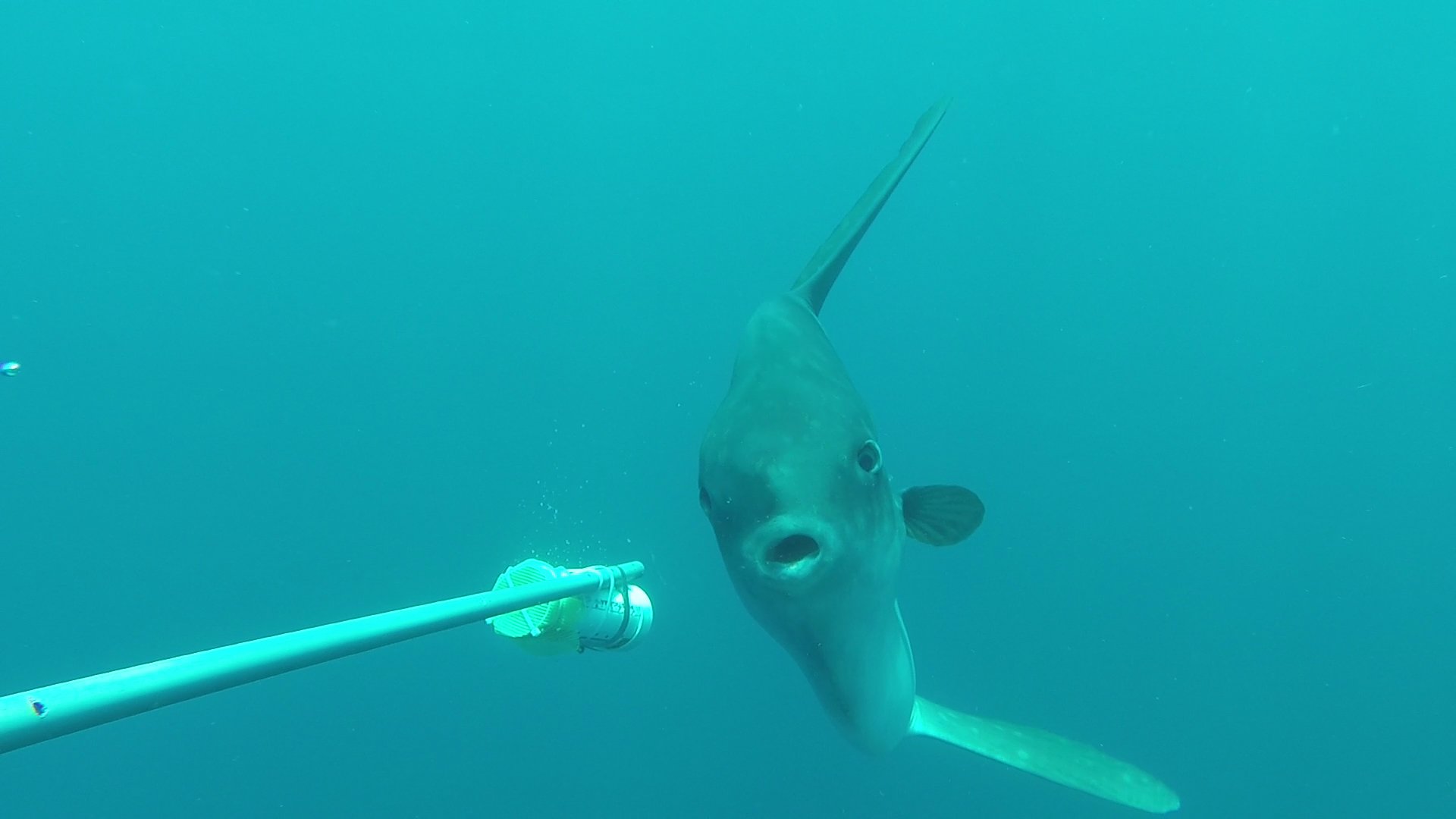
A sun fish Mola ramsayi in the waters of Fernandina Island. © Photo Charles Darwin Foundation
We have just got back from a six-day trip to the western part of the archipelago, sampling around Isabela and Fernandina islands (the largest and youngest islands in the archipelago, respectively) where the Cronwell current causes high productivity and colder temperatures. We were working under the Wolf volcano, which has recently been active.
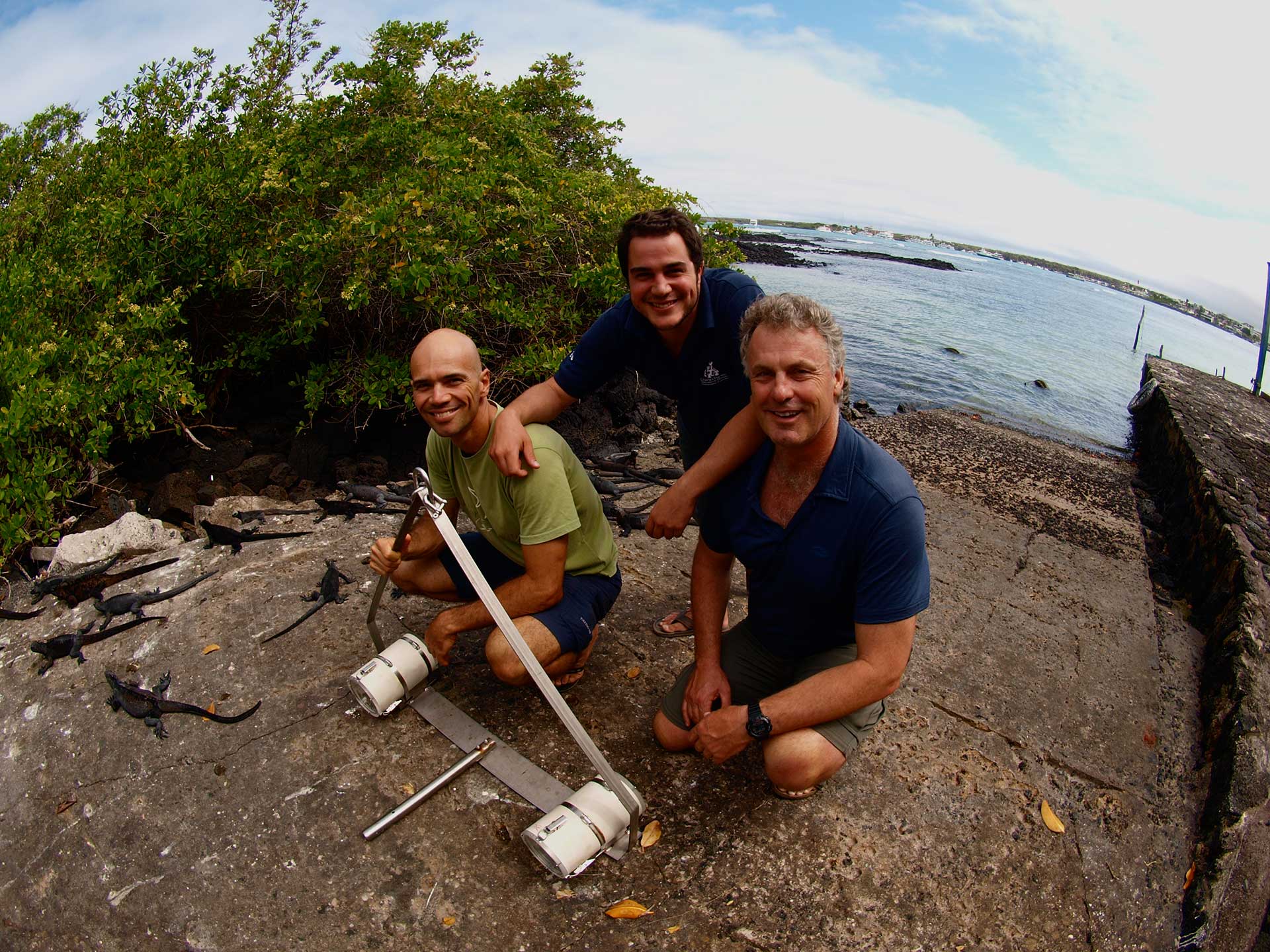
Galapagos stereo BRUVS team photo – CDF From left to right David Acuna, Pelayo Salinas de Leon, Euan Harvey. © Photo Charles Darwin Foundation
Between both campaigns we have worked on video analysis, which is providing interesting discoveries. We keep adding new records of fish species for the Galapagos Islands and we also found what we believe are two unknown seasonal aggregating sites of tiger sharks Galeocerdo cuvier within the Galapagos. There are many more hours of image analysis to be done before we can statistically analyse the data, but a first look at the imagery shows an abundance of large adults and sub-adults of this emblematic species. We regularly see tiger sharks in our imagery. The Galapagos shark Carcharhinus galapagensis seems to be the most abundant and widely distributed species here, present around most of the islands and in different underwater coastal habitats.
